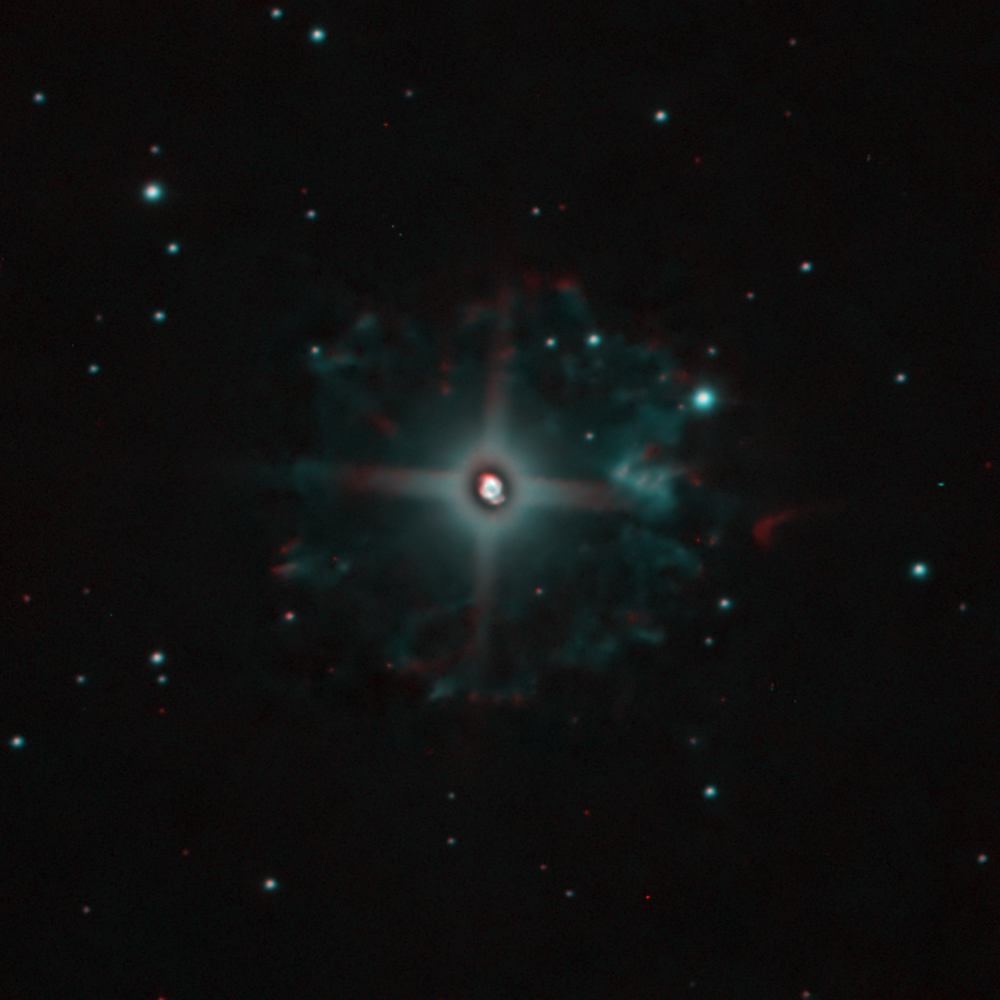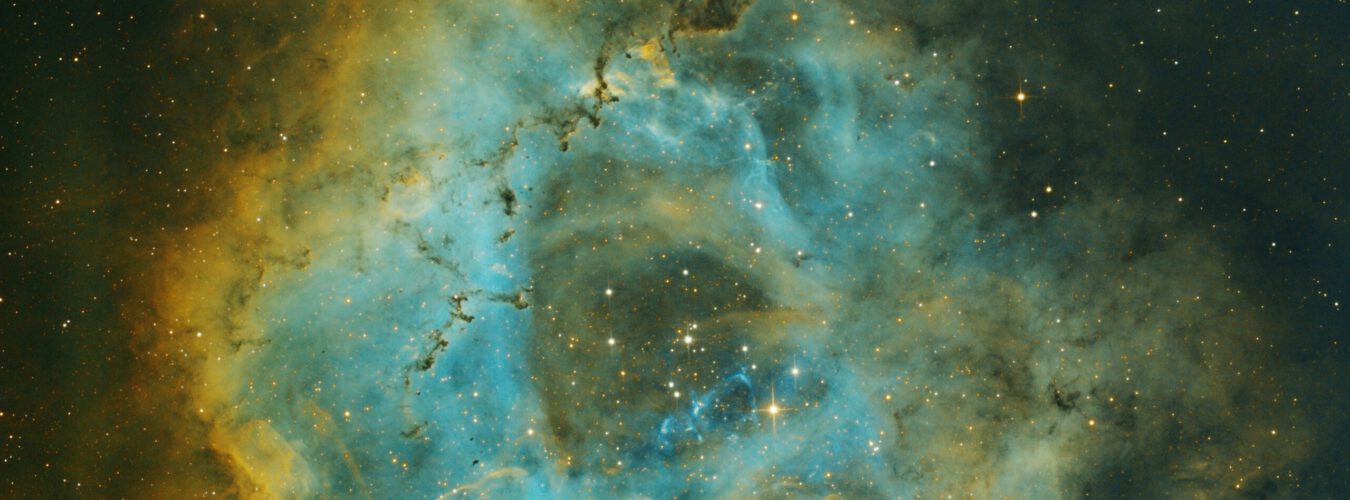I had taken a spectrum of the Cat’s Eye Nebula (Caldwell 6). It is very similar to the spectrum of the Orion Nebula, but brighter in Oiii than in Ha (inverse of the Orion Nebula).
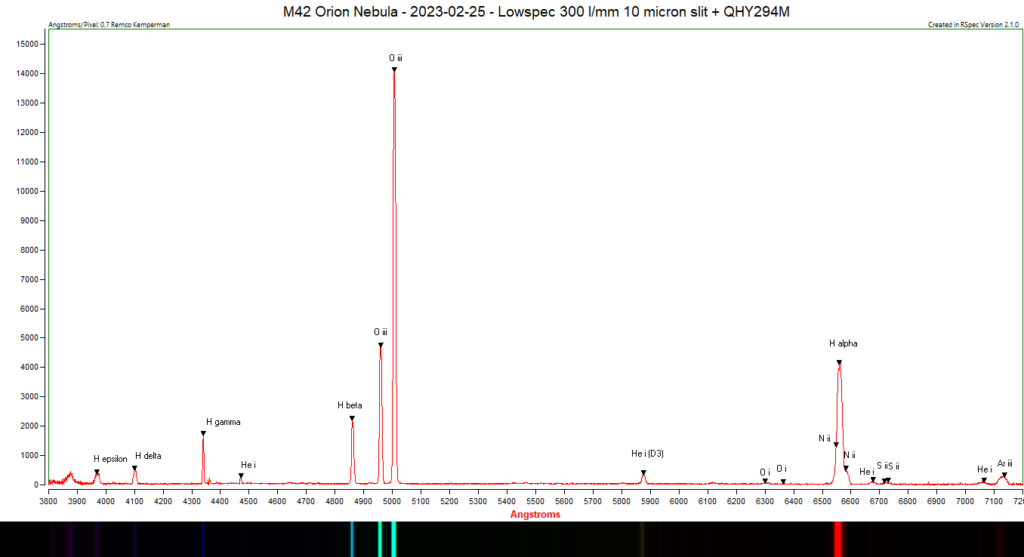
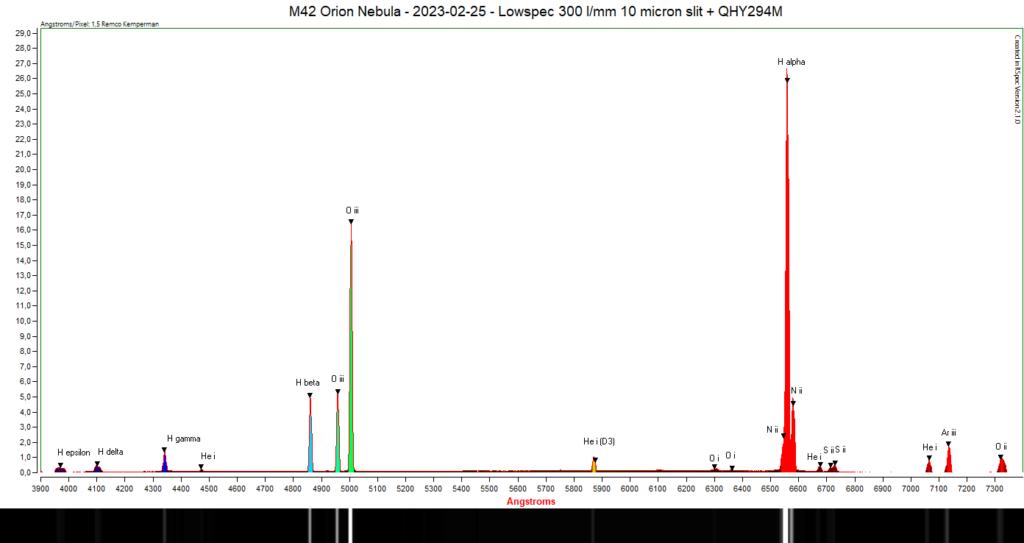

At the time that I took the spectrum I saw the skewed/curved emission lines as an error in the optics in the spectroscope, until yesterday I read on wikipedia that the ejected materials in the cat’s eye have 2 jets with a speed of about 1,900 km/s.
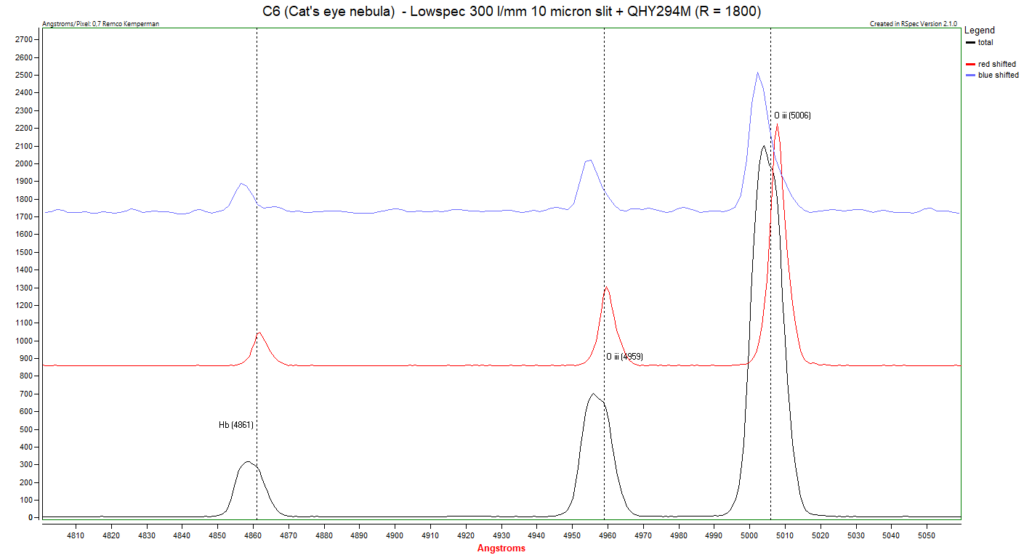
Then I analyzed the 2 tips of the emission lines separately. And indeed, there appears to be a clear Doppler shift in my spectra. Smaller than 1,900 km/s, but that also makes sense when you see the angle of view of the Cat’s Eye Nebula.
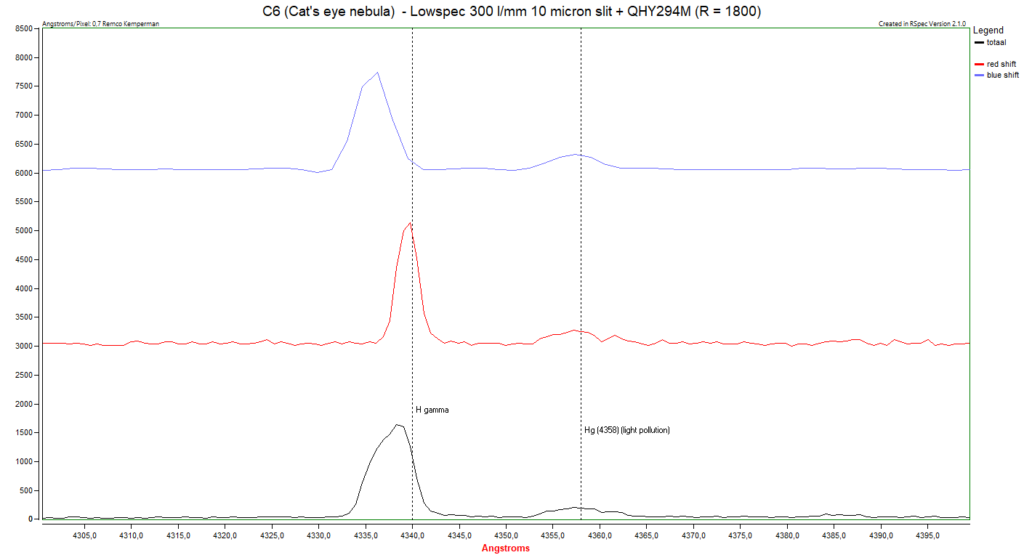
Right next to the H,gamma line there is a handy calibration line, a light pollution line of mercury vapor in fluorescent lamps. I did not subtract this in the analysis, so I could accurately calibrate the wavelength. Handy that light pollution of ours 😉
The four emission peaks of Oiii and hydrogen were measured per tip and over the average and translated to a radial velocity. That is graphed in the following graph. The average line is the average over those 4 emission lines.
My own Ha shot of the cat’s eye nebula is also included, with the beautiful outskirst around the bright core. On a professional image I indicated where the slit was.
